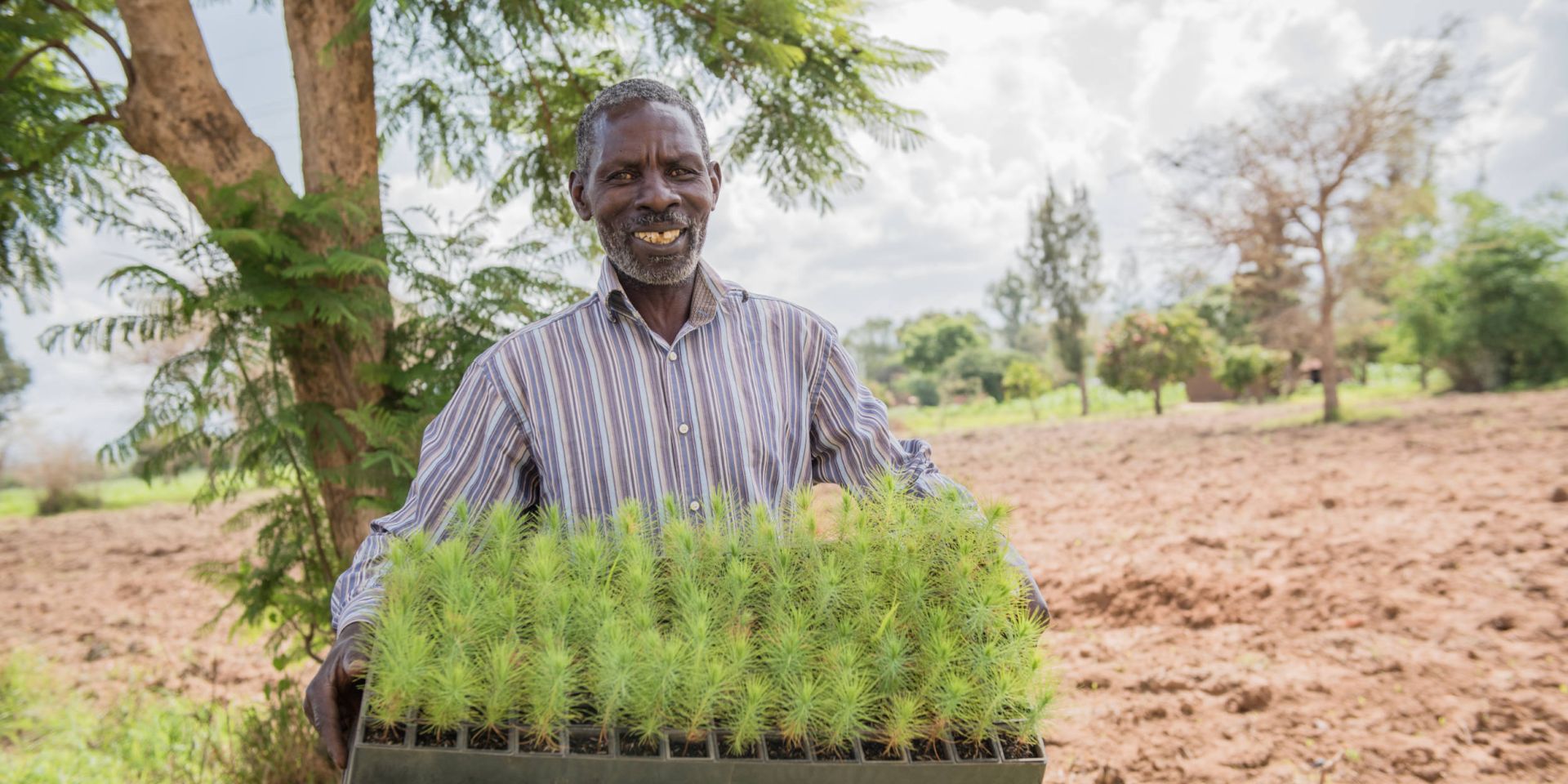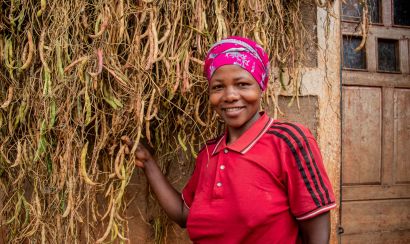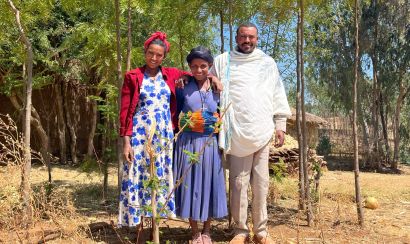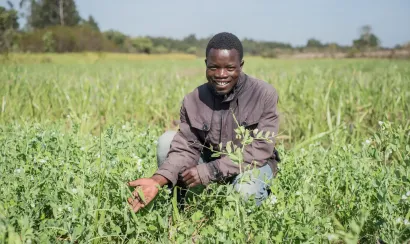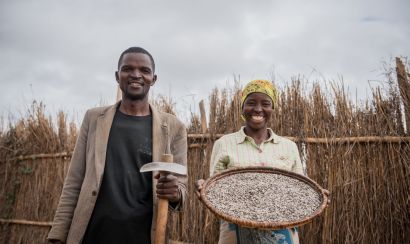Financial sustainability: impact growth via "revenue engines"
To achieve our vision of supporting 10 million farm families to become more prosperous by 2030, we must make every dollar go further. Cost efficiency has always been central to One Acre Fund’s mission and business model, and over the last few years, we have doubled down on this effort – in particular, by using metrics like SROI (as highlighted in the Scale and Sustainability section above) to guide decision-making about where and how to deploy resources for maximal farmer impact.
As part of this push, in 2022, One Acre Fund invested in exploring and scaling several promising “revenue engines” - impact channels that can also generate substantial earned revenue. Following an initial start-up period, these channels have the potential to become largely or fully self-sustaining over time, capable of reaching and impacting millions of farm families without external funding. Here are a few examples.
Equipping farmers year-round via rural retail shops
In a growing range of markets, One Acre Fund is making our products and services more accessible to more farmers by establishing brick-and-mortar storefronts in rural areas. These shops, sometimes operated in partnership with local entrepreneurs and sometimes directly by One Acre Fund field staff, are often the only place where nearby farmers can access high-quality inputs.
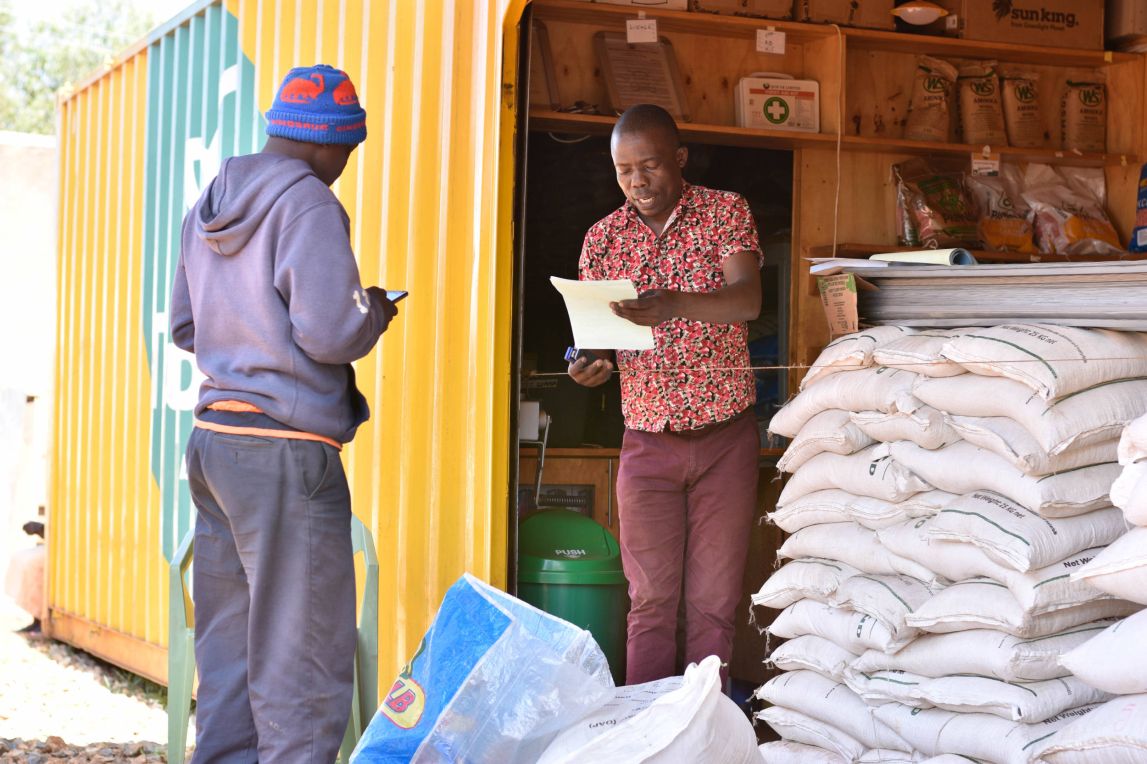
“The shops feel like a supermarket because they have everything a farmer needs,” says farmer Catherine Kisa from Webuye, Kenya “We get to see different products and seek information from the friendly shop staff.”
In the past year, our programs in Kenya and Rwanda have increasingly integrated their growing networks of rural retail shops into our client service model, for example enabling clients to easily order and pick up new products at nearby shops rather than waiting for seasonal deliveries. We also launched rural retail pilots in Tanzania, Malawi, and Nigeria in 2022, ending the year with total 450 storefronts organization-wide, collectively serving over a million farmer customers annually.
As a revenue engine: Rural retail shops enable One Acre Fund to reach more farmers (both clients and non-clients) more frequently (providing access year-round with more ways to shop and pay), increasing our total sales volume, via a model that is more cost-efficient than our higher-touch full-service program. With increasing transaction sizes and economies of scale, this work has the potential to become self-sustaining in our mature programs within the next several years.
Supporting farmer commercialization via market access programs
We have found that One Acre Fund clients tend to re-invest their new farm profits productively – for many farmers, this means diversifying into higher value commercial crops. To support these efforts, One Acre Fund has expanded our service offerings across crop value chains, with emphasis on guaranteeing higher prices for farmer harvests through connections to competitive markets. For example, in 2022:
- In Kenya, we aggregated, processed, and exported 2,370 MT of macadamia and 50 MT of avocado grown generating $124,000 in additional profits for 4,400 farmers. We also began exploring market access opportunities for potatoes, french beans, and groundnuts.
- In Rwanda, we aggregated and locally sold 2,200 MT of maize and 60 MT of beans, and exported 90 MT of avocado, generating $96,000 in additional profit for 3,400 farmers. We also supported 13 coffee farmer cooperatives with inputs and training and began exploring connections with international coffee buyers.
- In Uganda, we are working with a leading regional coffee processor/exporter to connect coffee-farming clients with services such as hulling, which roughly doubles the value of harvested coffee. We are also exploring further options for supporting farmers with coffee certification and export.
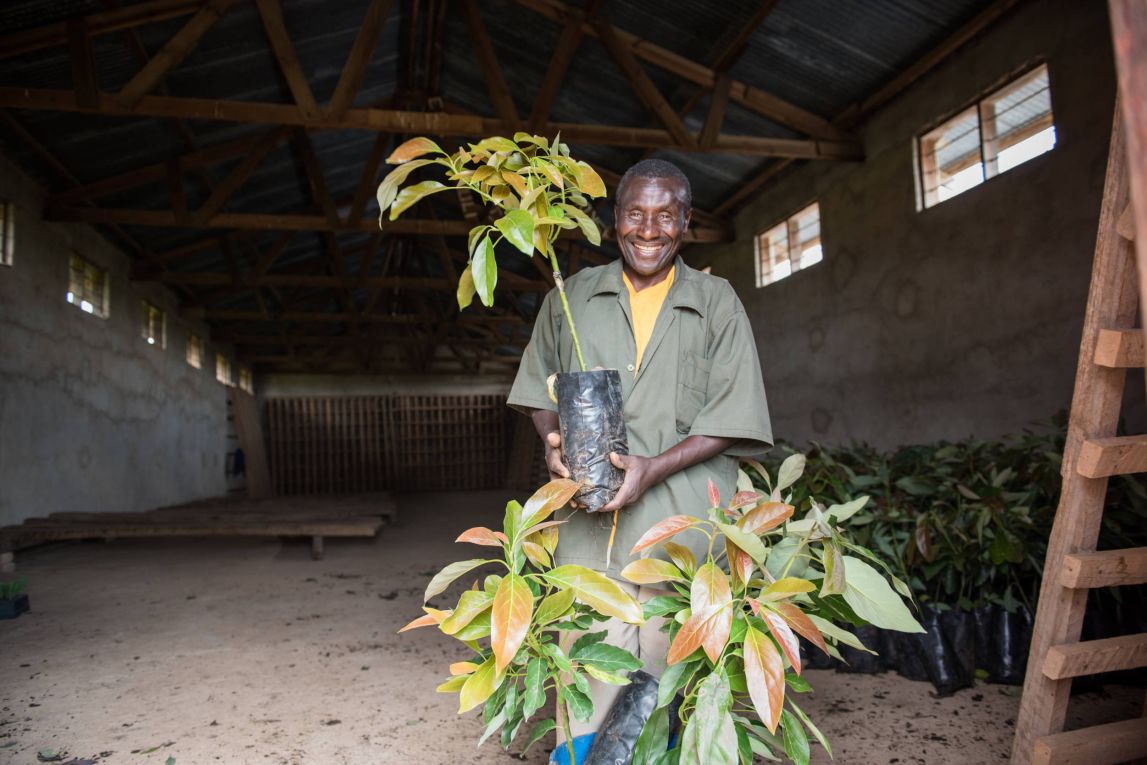
Impactful agribusinesses are essential for this journey to commercialization. That’s why we set up a subsidiary called Smallholder Resilience Ventures (SRV), formerly known as the Smallholder Resilience Fund. Through our SRV pilot, we invest in agribusinesses to help them grow their work by exporting and processing harvests, passing on more value to farmers, and strengthening value chains. The focus is climate-friendly high-value crops, particularly tree crops like avocado and macadamia, that are more resilient to climate change. Our first investments in Rwanda are in avocado processing and export, and dried chili production and export. The long-term goal is to create profitable opportunities for smallholders as they transition to climate-resilient crops.
As a revenue engine: Market inefficiencies mean that significant smallholder profit potential goes unrealized, particularly for products with high global demand like avocado and macadamia. One Acre Fund can unlock this potential by connecting farmers to local and international buyers, processors, and exporters – resulting in larger client transactions and much higher margins, even after radically increasing farmer profits. While still early-stage at present, certain channels of this work have the potential to become self-sustaining within the next five to 10 years.
Connecting farmers to carbon markets via agroforestry
Voluntary carbon markets – where global actors trade “carbon credits” of mitigated emissions - represent one of the world’s primary climate funding mechanisms, approaching a total value of $50 billion by 2030. Yet, in the current status quo, African smallholders are not accessing or benefiting from these markets.
One Acre Fund is working to change this. We have launched carbon financing pilots across Zambia, Tanzania, and Malawi; trialing several different approaches for equipping farmers to plant large numbers of trees, grow them to maturity, and eventually receive carbon market payouts for carbon sequestration. Our model helps incentivize long-term tree stewardship by offering tree varieties that provide secondary benefits (such as soil improvement and fruit/nut production), as well as annual survival pre-payments prior to credit qualification.
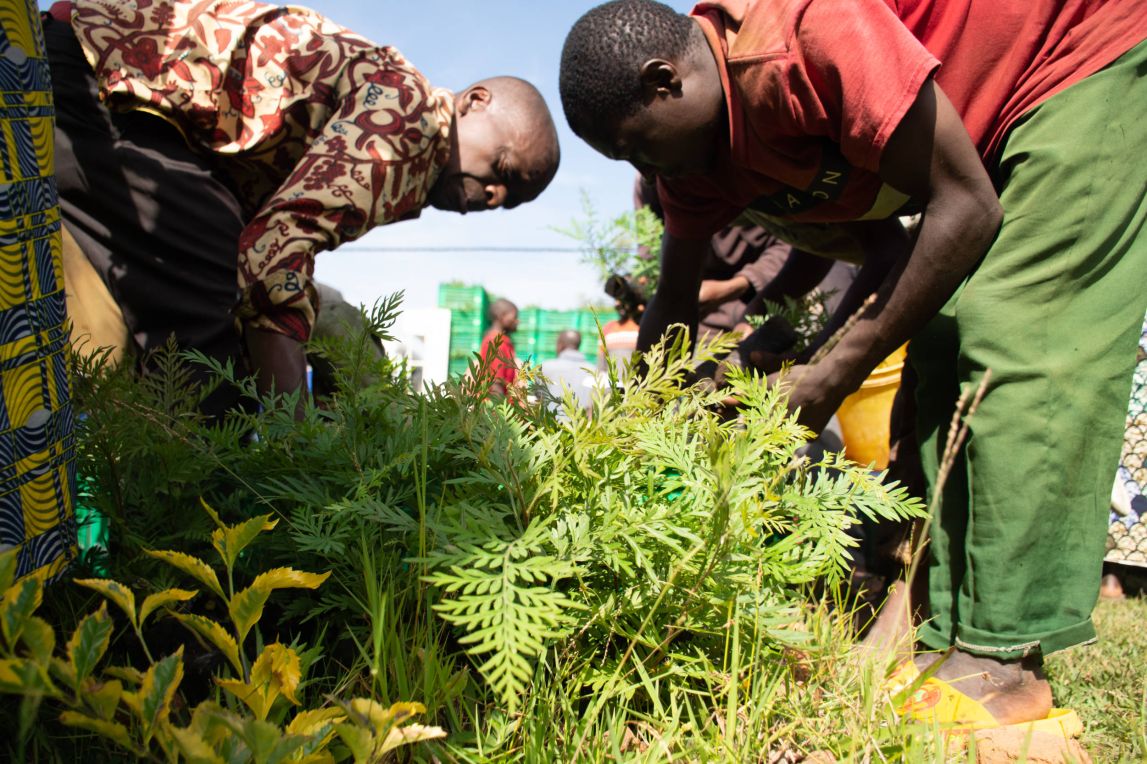
51-year-old Atanas Luwago from Kitowo, Tanzania, has farmed with One Acre Fund for four seasons now, and this year he is participating in the carbon credit trial. “I enrolled in the tree program because it is an opportunity to earn while caring for the environment. I was happy to hear that I will be receiving money just by planting trees, which help purify the air we breathe and create rain catchment areas,” Atanas says.
As a revenue engine: These pilots are still small-scale, reaching about 1,500 farmers across three countries at present, and must still overcome barriers around certifying and monitoring carbon sequestration in highly rural areas. However, we are working on promising solutions (such as new remote sensing technologies), and see the potential for massive growth. While “igniting” this revenue engine will still require significant funding and/or financing in the early years before carbon revenues kick in, carbon financing at steady-state could fully fund program costs and drive major new farmer profits, in addition to the many secondary benefits of tree-planting, for millions of farm families.
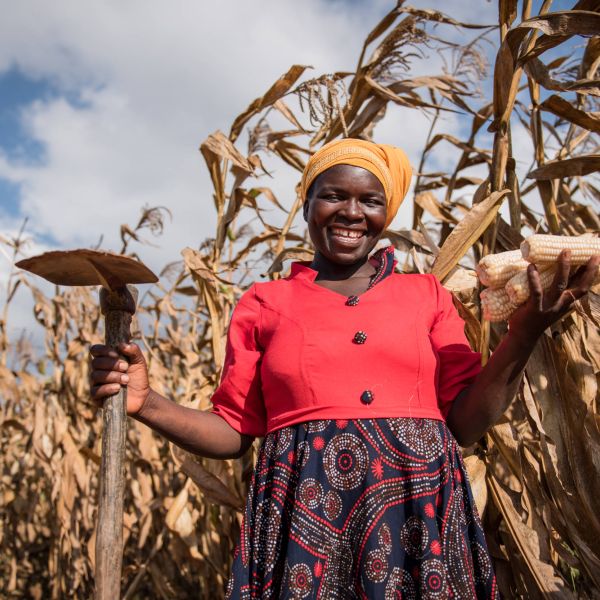
Learn more in our annual report
Our 2022 Annual Report takes stock of our work in growing farmer impact, building resilience, and delivering sustainable livelihood changes. Read report
